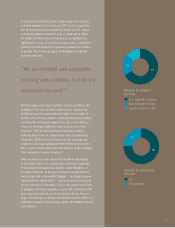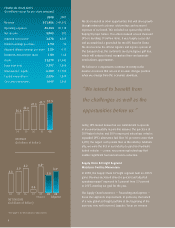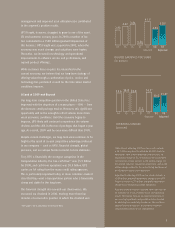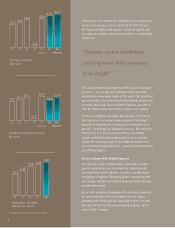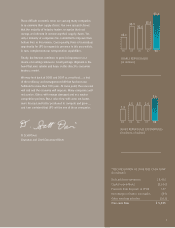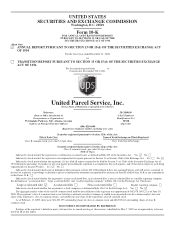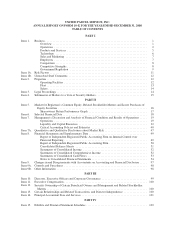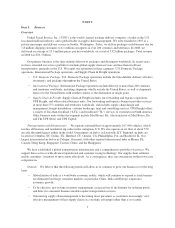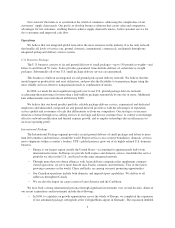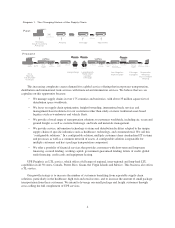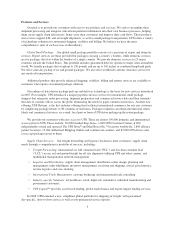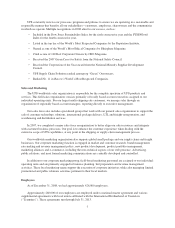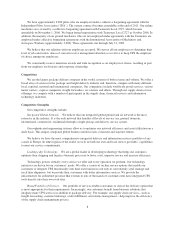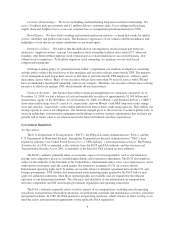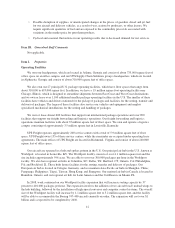UPS 2008 Annual Report Download - page 14
Download and view the complete annual report
Please find page 14 of the 2008 UPS annual report below. You can navigate through the pages in the report by either clicking on the pages listed below, or by using the keyword search tool below to find specific information within the annual report.the hub’s sorting capacity to 110,000 packages per hour, largely through the use of new automation
technology.
• In 2007, we implemented the largest service expansion of our international shipping portfolio in more
than a decade. UPS began offering customers three, rather than two, daily time-definite delivery
options to and from the world’s most active trading markets, giving customers greater flexibility in
managing their businesses.
• In 2008, we completed construction of a new hub in Tamworth, England, UPS’s largest ground hub
outside the U.S. It replaces three smaller facilities, and adds more capacity and better efficiencies than
existed with the three separate facilities.
• Also in 2008, we acquired our partner’s interest in the small package joint venture operation in
Romania.
Growth in Asia is being driven by global demand, which is stimulating improved demographic and
economic trends throughout the region, particularly in China and India. Over the last few years UPS has steadily
increased air service between the U.S. and Asia.
• In 2006, we added three additional daily flights between Shanghai, China and the U.S., and another
new flight between Qingdao, China and Incheon, Korea. We also began direct air service between
Shanghai and Cologne. Those flights support international express volume into and out of China,
which has seen dramatic growth in recent years.
• In 2007, we added six daily flights between the U.S. and Nagoya, Japan. This new service
complements our 78 weekly flights into and out of Tokyo and Osaka, Japan. These flights connected to
Shanghai in 2008, enhancing intra-Asia service.
• In 2008, we opened a new air hub in Shanghai, the first constructed in China by a U.S. carrier. It links
all of China via Shanghai to UPS’s international network with direct service to the Americas, Europe
and Asia. It also connects points served in China by UPS.
• Also in 2008, we broke ground on a new intra-Asia air hub in Shenzhen, China, which is expected to be
operational in 2010. We also acquired our partner’s interest in a small package shipping joint venture
in Korea.
The international package delivery market has been growing at a faster rate than that of the U.S., and our
international package operations have historically been growing faster than the market. We plan to use our
worldwide infrastructure and broad product portfolio to grow high-margin premium services. We will also
implement cost, process and technology improvements in our international operations. We believe that both
Europe and Asia offer significant opportunities for long-term growth.
Supply Chain & Freight Segment
The Supply Chain & Freight segment consists of our forwarding and logistics capabilities as well as our
UPS freight business unit.
In today’s global economy, companies’ supply chains are growing increasingly complex, as shown in
Diagram 1 below. Many of our customers, large and small, have outsourced all or part of their supply chains to
streamline and gain efficiencies, to improve service, to support new business models and to strengthen their
balance sheets.
3


